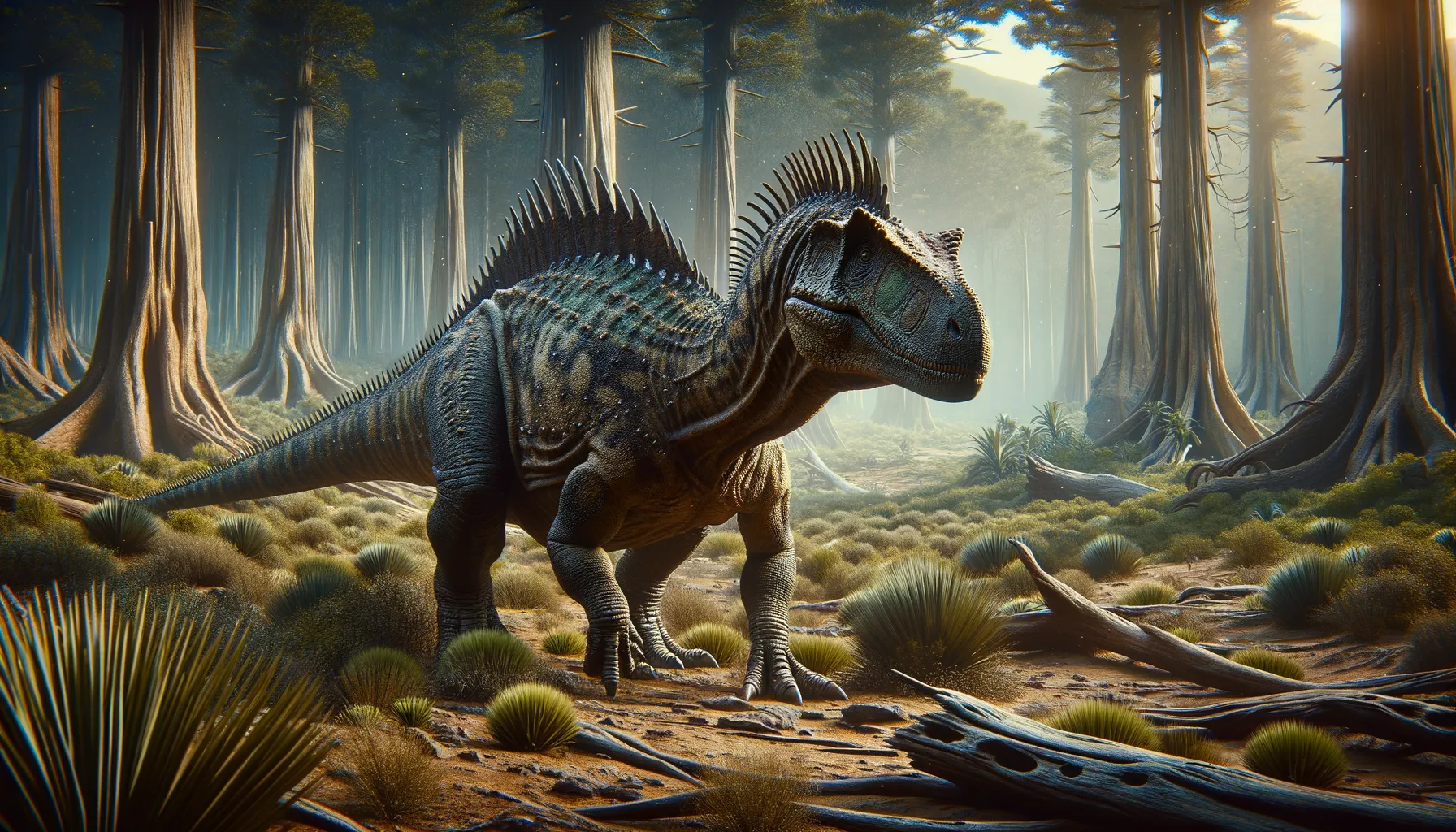
Emausaurus
Armored and ready for the ancient world!
Period
Jurassic
Length
Reached lengths of about 2.5 to 3 meters.
Height
Stood around 1 meter tall at the hips.
Weight
Approximately 200 to 250 kilograms.
Emausaurus was a small, armored dinosaur that lived during the early Jurassic period. Known for its bony plates and protective spikes, it represented an early stage of evolution in the group of dinosaurs known as thyreophorans. Emausaurus primarily walked on all fours and had a stout body to support its heavy armor. Fossils of this species have provided valuable insights into the diversity and adaptation of early armored dinosaurs.
Diet
Emausaurus was a herbivore, primarily feeding on low-lying vegetation such as ferns and cycads. Its diet consisted mainly of plants that were abundant during the Jurassic period.
Hunting
Emausaurus did not hunt as it was a plant-eater. Instead, it foraged for food, using its keen senses to find and consume vegetation that supported its nutritional needs.
Environmental challenges
Emausaurus faced challenges such as fluctuating climates and competition for food resources with other herbivores. Predators posed a constant threat, and its armor served as protection against these adversaries. Additionally, tectonic activities during its time could have altered its habitat, affecting its available food sources and living conditions.
Speed
Moved at a slow pace due to its bulky build.
Lifespan
Estimated to live around 20 to 30 years.
First discovery
Discovered in 1990 in northern Germany.
Fun Facts
- Emausaurus is named after the Ernst-Moritz-Arndt University of Greifswald, which is abbreviated as EMAU, where the first fossil was studied.
- Emausaurus lived during the Early Jurassic period, roughly 190 million years ago.
- This dinosaur was discovered in what is now Northern Germany.
- Emausaurus was a small herbivore, estimated to be about 2 meters (6.5 feet) long.
- Unlike some other herbivorous dinosaurs, Emausaurus walked on two legs but could also move on all fours.
- Emausaurus had a bony armor on its back, which was likely used for protection.
- Its fossils provide important insights into the early evolution of armored dinosaurs.
Growth and Development
Emausaurus likely experienced a growth process where its armor plates developed as it matured. Juveniles might have been more vulnerable to predators, with armoring becoming thicker and more robust with age. This gradual development of physical defense could have been crucial for survival.
Habitat
Emausaurus lived in forested areas with a warm, humid climate, rich in diverse plant life. These habitats provided ample food sources and shelter, offering protection from predators. Its environment was likely characterized by lush greenery, crucial for supporting its dietary needs.
Interaction with other species
Emausaurus co-existed with various other herbivores and smaller predators, maintaining a balance within its ecosystem. Its armored body would have limited aggressive encounters with predators. In its habitat, interactions were minimal and primarily for food and territory management.
Natural lifespan
Emausaurus had a natural lifespan similar to other small dinosaurs, around 20 to 30 years.
Reproduction
Emausaurus likely laid eggs, with nests constructed in environments that provided suitable conditions for incubation. Mothers may have exhibited some form of care to ensure the eggs remained safe from predators and environmental hazards.
Social behaviour
Emausaurus likely lived solitary or in small groups, focusing on foraging for food and avoiding predators. Social interactions may have been limited, with grouping providing safety in numbers against threats.
Fossil locations
Fossils of Emausaurus have been primarily found in northern Germany. These findings have contributed significantly to the understanding of early armored dinosaurs and their adaptations. The original discovery site has provided important data for paleontologists studying Jurassic ecosystems.
